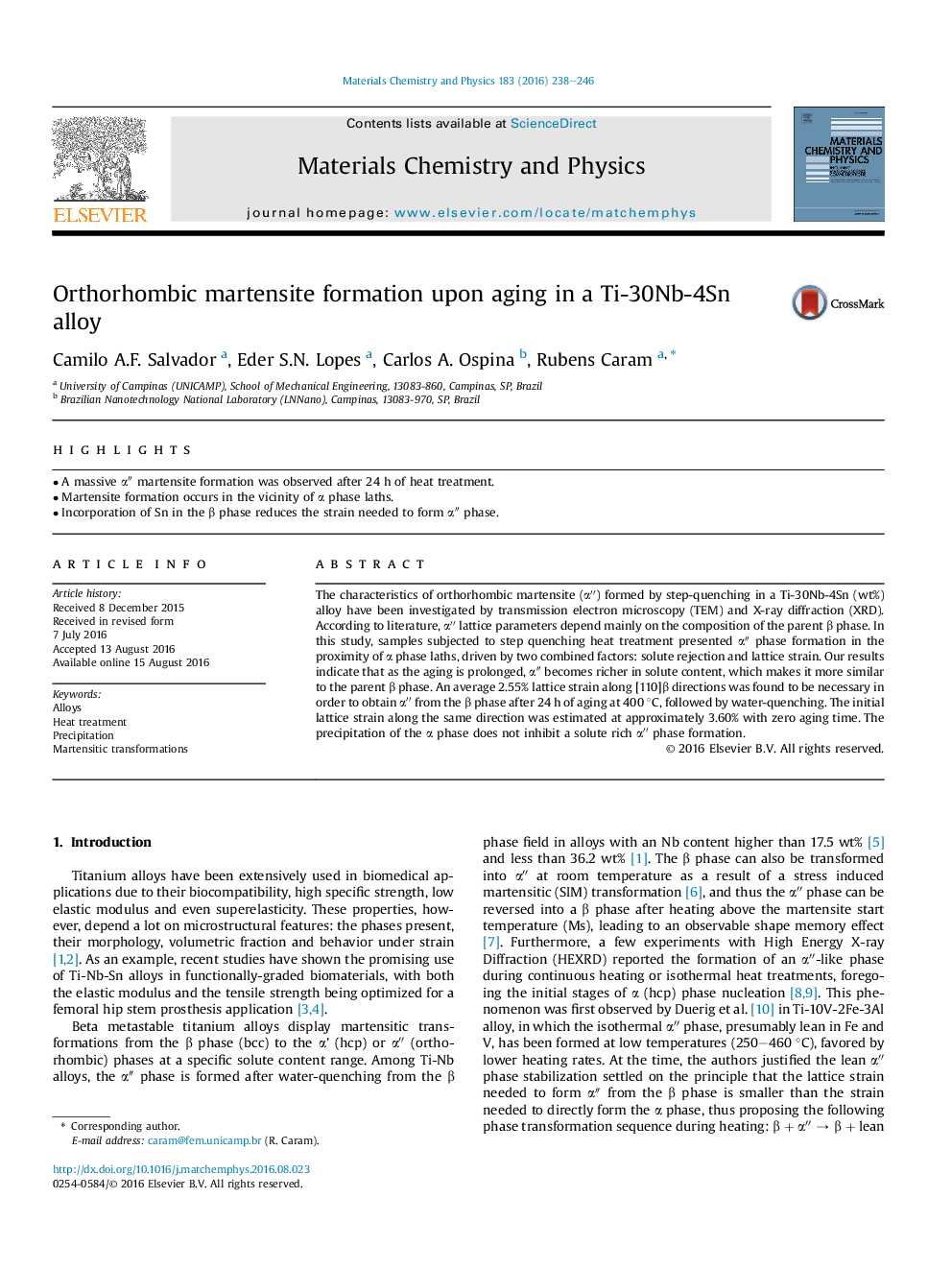| Article ID | Journal | Published Year | Pages | File Type |
|---|---|---|---|---|
| 5448567 | Materials Chemistry and Physics | 2016 | 9 Pages |
Abstract
The characteristics of orthorhombic martensite (αâ³) formed by step-quenching in a Ti-30Nb-4Sn (wt%) alloy have been investigated by transmission electron microscopy (TEM) and X-ray diffraction (XRD). According to literature, αⳠlattice parameters depend mainly on the composition of the parent β phase. In this study, samples subjected to step quenching heat treatment presented αⳠphase formation in the proximity of α phase laths, driven by two combined factors: solute rejection and lattice strain. Our results indicate that as the aging is prolonged, αⳠbecomes richer in solute content, which makes it more similar to the parent β phase. An average 2.55% lattice strain along [110]β directions was found to be necessary in order to obtain αⳠfrom the β phase after 24 h of aging at 400 °C, followed by water-quenching. The initial lattice strain along the same direction was estimated at approximately 3.60% with zero aging time. The precipitation of the α phase does not inhibit a solute rich αⳠphase formation.
Related Topics
Physical Sciences and Engineering
Materials Science
Electronic, Optical and Magnetic Materials
Authors
Camilo A.F. Salvador, Eder S.N. Lopes, Carlos A. Ospina, Rubens Caram,
